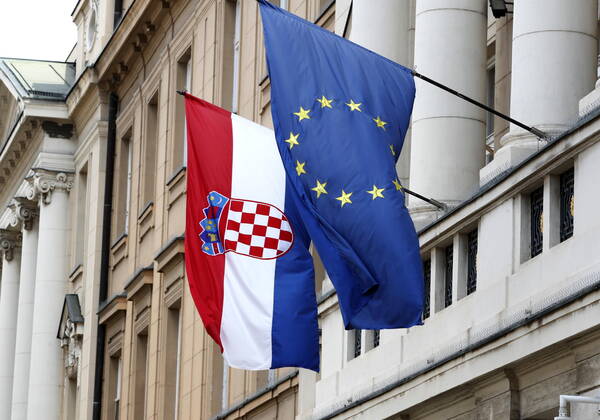
ZAGREB – With the new year Croatia, the last country to have entered the European Union, will adhere to the Eurozone and the Schengen area agreement. For the Balkan country this means the completion of a long journey toward the Euro-Atlantic institutions, which began in 2000 with the arrival in Zagreb of the pro-European democratic forces to power, after the nineties, which had been marred by the bloody independence war. Croatia then decided to adhere to NATO in 2009 and to become a member of the EU in 2013.
The adoption of the euro and its entrance into the Schengen area conclude the last stages of Croatia’s full integration in a united Europe. The country from January 1 will become the 20th member of the Eurozone, which enlarges its membership for the first time since 2015 when Lithuania adopted the euro.
The area of free movement of people was expanded for the first time in 2008, when Switzerland adhered and now with Croatia it will grow to 27 countries (23 from the European Union plus Iceland, Norway, Switzerland and Lichtenstein) with 420 million inhabitants. Since the beginning of 2023 all terrestrial border controls with Slovenia and Hungary will be abolished as well as the maritime ones with Italy, while for air traffic we will have to wait until March 26, when the summer flying hours will start.
In total 73 terrestrial border crossings will be abolished and 12 will be abolished in maritime ports.
The absence of border controls will bring about notable savings and facilitate commerce, of particular importance for the strong tourism sector in Croatia which will be in the country’s interest as most of its tourism comes from the Schengen area. There will also be immediate advantages for fresh food exporters to Italy, particularly for fish, from the Dalmatian and Istrian coastline. At the same time, external border controls to the EU will be reinforced, with Bosnia and Herzegovina, Serbia and Montenegro, nearly 1,350 kilometers of coastline in total, where already in the past days long lines to enter Croatia were seen. This is the longest external border of all the EU Member States. A few days ago, Prime Minister Andrej Plenkovic highlighted that Croatia has never, in the past or now, wanted with its entry into Schengen “build up walls, gates or barbed wire at the border with Bosnia”, a country which is on the Balkan migration route. “To the contrary – he explained- in close cooperation with Bosnian police, we want to do our best to prevent illegal migration”.
Even entering the Eurozone has many advantages for tourism, which is vital for Croatia’s economy, contributing nearly 20% to the GDP. However, its entry with a high inflation rate at 13.5% in November, has raised concerns but experts believe it will have a positive effect on loans and mortgages. Interest rates will grow, but surely less than what they would have if the country had stayed outside the euro. The transition to the euro in the country began in September with the obligation of showing all prices in both currencies, a rule which be valid for all of 2023. For cash payments the transition period will last until January 14 2023 when it will be possible to pay both in kuna and in euro after it only euro payments will be valid. The conversion rate has been fixed at 7.53450 kuna for 1 euro.






